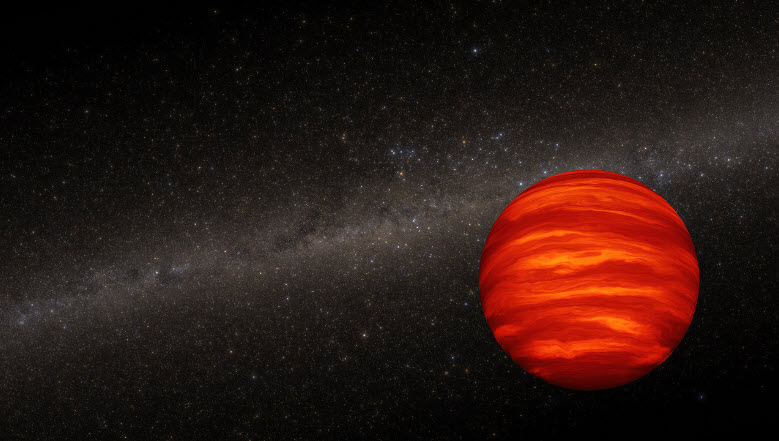Paired Brown Dwarfs End Up Alone
Posted on March 22, 2024

A new study has found brown dwarfs often end up alone even if they begin paired. Astronomers using Hubble found that the older a brown dwarf is the more likely it is to be alone. An artist's concept of a brown dwarf is pictured above.
Brown dwarfs are celestial objects that cannot be classified as a planet or star. Here is a description of a brown dwarf from NASA:
This class of object is too large to be a planet (and did not form in the same way), but is too small to be a star because it cannot sustain nuclear fusion, since it is less massive than even the smallest stars. A brown dwarf is marked by wind-driven horizontal bands of thick clouds that may alternate with relatively cloud-free bands, giving the object a striped appearance. Whirling storm systems as big as terrestrial continents, or even small planets, might exist.
The study's lead author, Clémence Fontanive of the Trottier Institute for Research on Exoplanets, Université de Montréal, Canada, says in a statement, "Our survey confirms that widely separated companions are extremely rare among the lowest-mass and coldest isolated brown dwarfs, even though binary brown dwarfs are observed at younger ages. This suggests that such systems do not survive over time."
Fontanive also says, "Our Hubble survey offers direct evidence that these binaries that we observe when they're young are unlikely to survive to old ages, they're likely going to get disrupted. When they're young, they're part of a molecular cloud, and then as they age the cloud disperses. As that happens, things start moving around and stars pass by each other. Because brown dwarfs are so light, the gravitational hold tying wide binary pairs is very weak, and bypassing stars can easily tear these binaries apart."
The research was published in The Monthly Notices of the Royal Astronomical Society.
Image: NASA, ESA, Joseph Olmsted (STScI)
